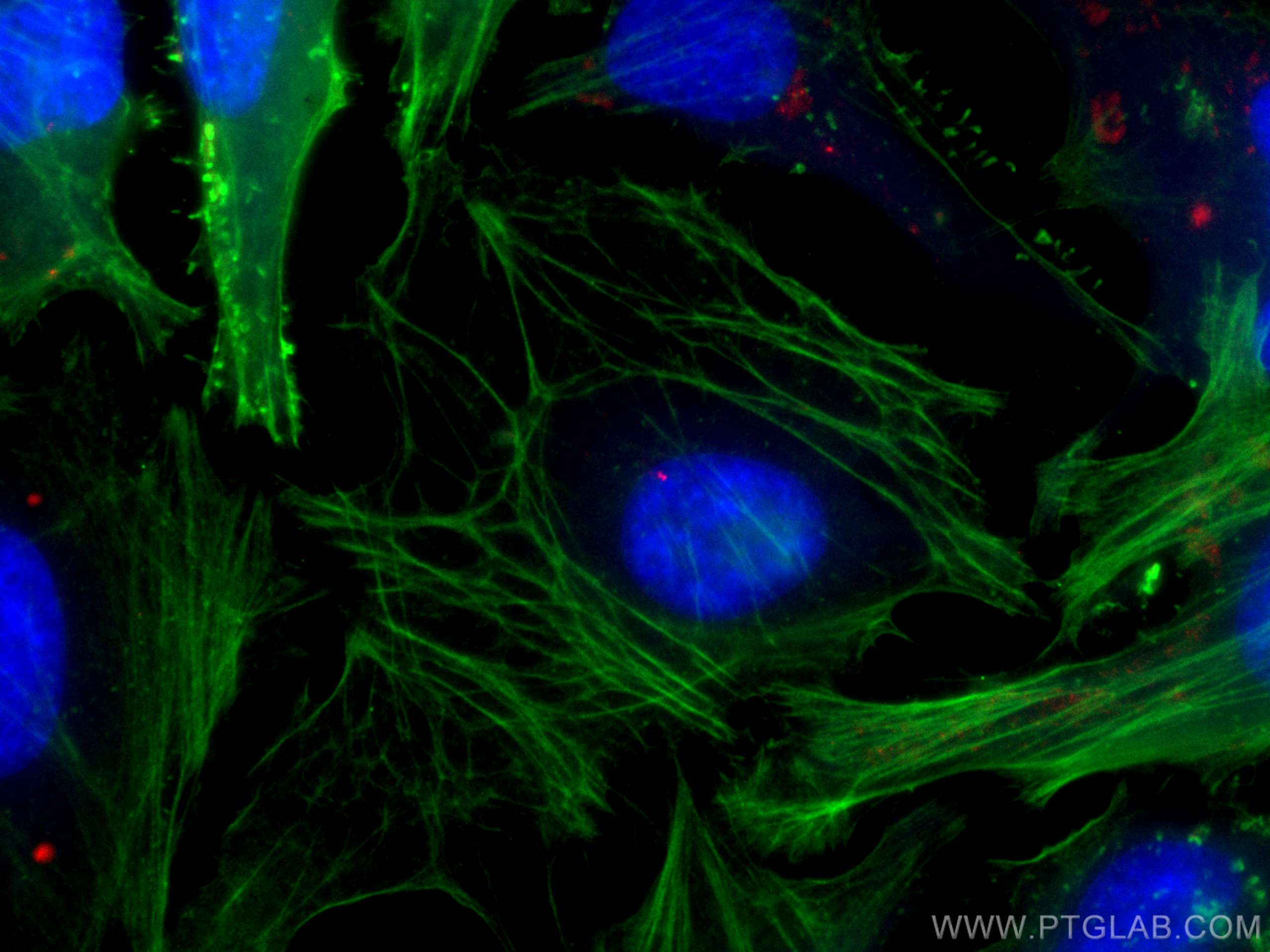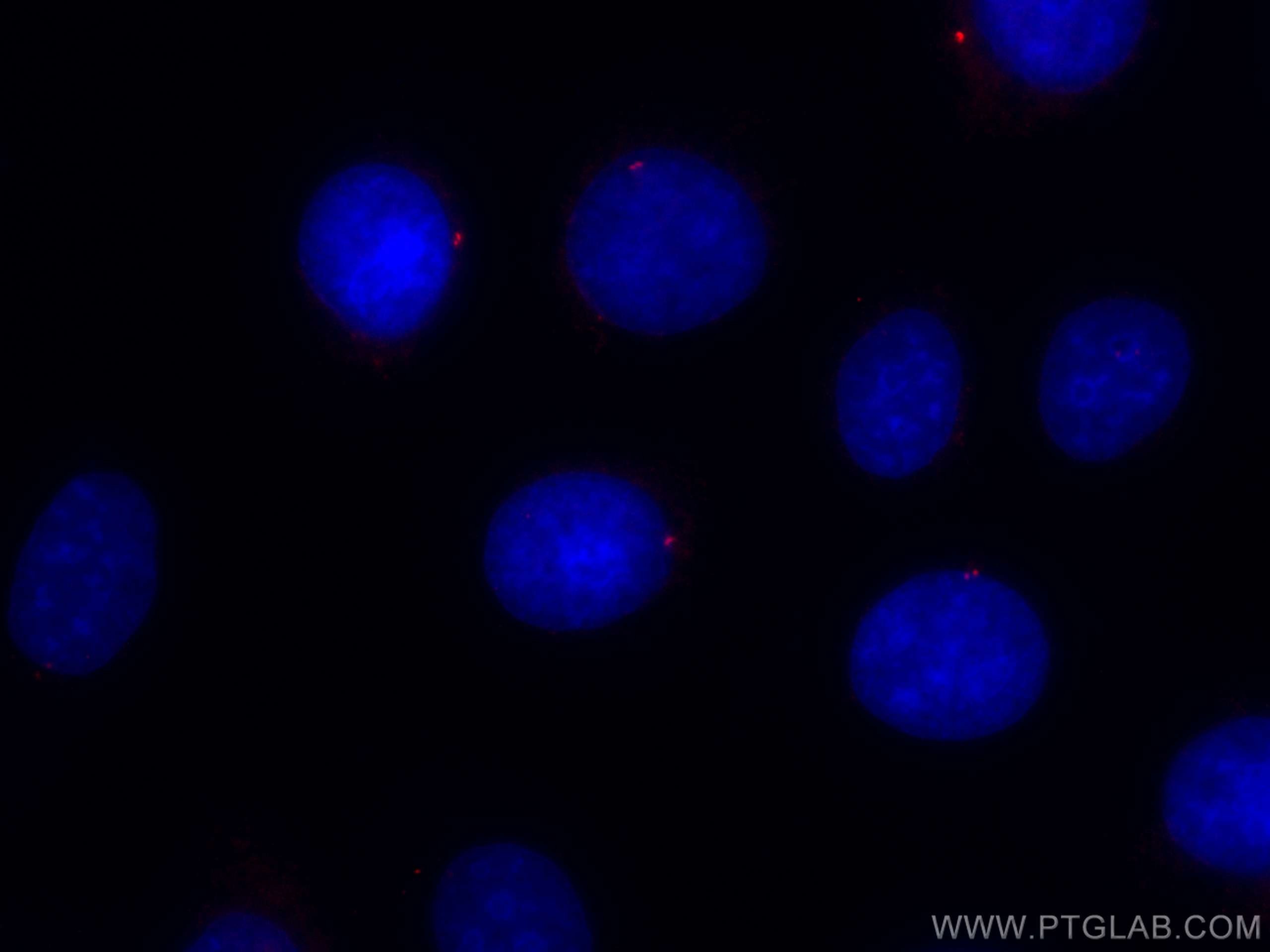Tested Applications
| Positive IF/ICC detected in | HeLa cells, MCF-7 cells |
Recommended dilution
| Application | Dilution |
|---|---|
| Immunofluorescence (IF)/ICC | IF/ICC : 1:50-1:500 |
| It is recommended that this reagent should be titrated in each testing system to obtain optimal results. | |
| Sample-dependent, Check data in validation data gallery. | |
Product Information
CL594-14498 targets CEP250/CNAP1 in IF/ICC applications and shows reactivity with human samples.
| Tested Reactivity | human |
| Host / Isotype | Rabbit / IgG |
| Class | Polyclonal |
| Type | Antibody |
| Immunogen |
CatNo: Ag5925 Product name: Recombinant human CEP250,C-NAP1 protein Source: e coli.-derived, PET28a Tag: 6*His Domain: 40-293 aa of BC001433 Sequence: RKLKNSQEAQQRQATLVRKLQAKVLQYRSWCQELEKRLEATGGPIPQRWENVEEPNLDELLVRLEEEQQRCESLAEVNTQLRLHMEKADVVNKALREDVEKLTVDWSRARDELMRKESQWQMEQEFFKGYLKGEHGRLLSLWREVVTFRRHFLEMKSATDRDLMELKAEHVRLSGSLLTCCLRLTVGAQSREPNGSGRMDGREPAQLLLLLAKTQELEKEAHERSQELIQLKSQGDLEKAELQDRVTELSALLT Predict reactive species |
| Full Name | centrosomal protein 250kDa |
| Calculated Molecular Weight | 281 kDa |
| GenBank Accession Number | BC001433 |
| Gene Symbol | CEP250/CNAP1 |
| Gene ID (NCBI) | 11190 |
| RRID | AB_2919808 |
| Conjugate | CoraLite®594 Fluorescent Dye |
| Excitation/Emission Maxima Wavelengths | 588 nm / 604 nm |
| Form | Liquid |
| Purification Method | Antigen affinity purification |
| UNIPROT ID | Q9BV73 |
| Storage Buffer | PBS with 50% glycerol, 0.05% Proclin300, 0.5% BSA, pH 7.3. |
| Storage Conditions | Store at -20°C. Avoid exposure to light. Stable for one year after shipment. Aliquoting is unnecessary for -20oC storage. |
Background Information
CEP250, also known as C-Nap1, is a 250 kDa coiled-coil protein that localizes to the proximal ends of mother and daughter centrioles. It is required for centriole-centriole cohesion during interphase of the cell cycle. It dissociates from the centrosomes when parental centrioles separate at the beginning of mitosis. The protein associates with and is phosphorylated by NIMA-related kinase 2, which is also associated with the centrosome.
Protocols
| Product Specific Protocols | |
|---|---|
| IF protocol for CL594 CEP250/CNAP1 antibody CL594-14498 | Download protocol |
| Standard Protocols | |
|---|---|
| Click here to view our Standard Protocols |






